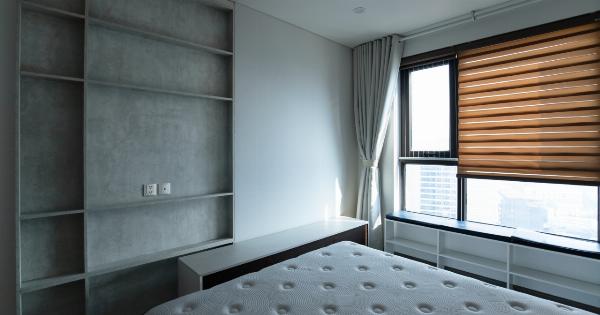Keeping your mattress clean and free from bacteria and mold is essential for maintaining a healthy sleep environment.
Over time, mattresses can accumulate dirt, sweat, dead skin cells, and even mold spores, which can lead to the growth of harmful bacteria and mold. In this article, we will discuss effective methods to combat bacteria and mold on your mattress, ensuring a clean and hygienic sleeping surface.
1. Regularly Vacuum Your Mattress
Vacuuming your mattress regularly is the first step in preventing bacteria and mold growth. Use a vacuum cleaner with a upholstery attachment to remove dust, dirt, and other allergens that may have settled on your mattress surface.
Pay close attention to the seams, edges, and crevices, as these areas tend to accumulate the most debris.
2. Use a Mattress Protector
Investing in a quality mattress protector is an effective way to combat bacteria and mold.
A mattress protector acts as a barrier between your body and the mattress, preventing sweat, dead skin cells, and other bodily fluids from seeping into the mattress. Choose a waterproof and breathable mattress protector to ensure maximum protection.
3. Wash Bedding Regularly
Regularly washing your bedding, including sheets, pillowcases, and blankets, is crucial in maintaining a clean mattress. These items come into direct contact with your skin and can transfer oils, sweat, and dirt to the mattress surface.
Make sure to follow the manufacturer’s instructions for washing and drying to keep your bedding fresh and bacteria-free.
4. Air Out Your Mattress
Allowing your mattress to breathe is vital in preventing mold growth. Once every couple of months, strip off all bedding and open the windows to allow fresh air to circulate around the mattress. Sunlight can also help kill bacteria and mold spores.
If weather permits, take your mattress outside on a sunny day for a few hours to air it out and naturally disinfect it.
5. Spot Clean Stains
If you notice any stains on your mattress, it’s important to spot clean them immediately. Mix a solution of mild detergent and warm water and gently dab the stained area with a clean cloth or sponge.
Avoid saturating the mattress as excess moisture can lead to mold growth. Once the stain is gone, pat the area dry with a clean cloth and allow it to air dry completely before putting on fresh bedding.
6. Rotate and Flip Your Mattress
Rotating and flipping your mattress regularly is essential in preventing the buildup of bacteria and mold in certain areas. Depending on the type of mattress, rotate it 180 degrees every three to six months.
If your mattress is double-sided, flip it over at the same time. This practice ensures even wear and tear and exposes different areas of the mattress to fresh air and sunlight.
7. Avoid Eating or Drinking on Your Mattress
While it may be tempting to enjoy a snack or beverage in bed, it’s best to avoid eating or drinking on your mattress. Accidental spills or crumbs can provide an ideal breeding ground for bacteria and mold.
Instead, enjoy your meals and drinks in a designated eating area to minimize the risk of stains and food particles making their way onto the mattress surface.
8. Use Natural Remedies
Natural remedies can also help combat bacteria and mold on your mattress. Essential oils such as tea tree oil, eucalyptus oil, or lavender oil have antimicrobial properties that can help kill bacteria and inhibit mold growth.
Dilute a few drops of your chosen essential oil with water and spray it lightly on your mattress surface. Allow it to air dry completely before covering with fresh bedding.
9. Professional Mattress Cleaning
For deep and thorough cleaning, consider hiring a professional mattress cleaning service. Professional cleaners have specialized equipment and knowledge to remove tough stains, allergens, and bacteria from your mattress.
They can also apply antimicrobial treatments to prevent future mold growth. Schedule professional cleaning at least once a year to keep your mattress in pristine condition.
10. Replace Your Mattress Regularly
No matter how well you maintain your mattress, it will eventually reach the end of its lifespan. On average, mattresses should be replaced every 7 to 10 years, depending on usage and quality.
Over time, even with the best cleaning practices, mattresses can accumulate bacteria, mold, and allergens that cannot be completely eradicated. Investing in a new mattress ensures a fresh and hygienic sleep surface.






























